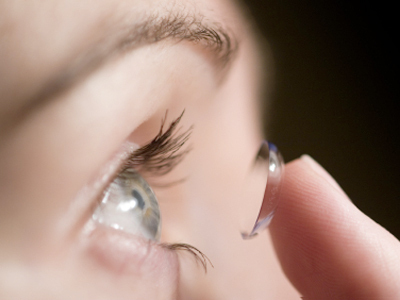University of Michigan researchers put heat vision technology into a contact lens
Engineering researchers from the University of Michigan have developed a one-of-its-kind light detector that operates at room temperature and is capable of sensing the full infrared spectrum all through putting the heat vision technology into a contact lens. Yep. That means, after night-vision goggles it is now the time of night-vision contact lenses. Without the necessity of the bulky cooling equipment, their technology can be incorporated into a super-thin design and therefore finds application in a cellphone or contact lens. Infrared vision has been traditionally used to spot things in the dark or tracking the heat leaks in houses, whereas in the medical field, doctors use it to monitor blood flow. Most conventional cameras can capture just the visible spectrum, but infrared imaging needs different combination of technologies to see near-, mid- and far-infrared radiation all at once. Additionally, they only operate at very cold temperatures.

The graphene-based detectors in use today suffer from poor sensitivity. To solve this problem, Zhaohui Zhong Zhong and Ted Norris, Professors of Electrical Engineering and Computer Science at the Univeristy, worked with graduate students came up with a new design of generating the electrical signal. Instead of directly measuring the free electrons emerging when light hits the graphene, they amplified the signal by looking instead at how the light-induced electrical charges in the graphene affect a nearby current. By putting a barrier layer between two graphene sheets, that acted as the insulator, the light detector device could be built. The device is described in a paper titled "Graphene photodetectors with ultra-broadband and high responsivity at room temperature," which appears online in Nature Nanotechnology.
The researchers envision a time when this technology can be integrated with wearable electronics or contact lens to give the wearers the experience of night vision. How cool is that? Share your thoughts with us in comments below.
Source: #-Link-Snipped-#

The graphene-based detectors in use today suffer from poor sensitivity. To solve this problem, Zhaohui Zhong Zhong and Ted Norris, Professors of Electrical Engineering and Computer Science at the Univeristy, worked with graduate students came up with a new design of generating the electrical signal. Instead of directly measuring the free electrons emerging when light hits the graphene, they amplified the signal by looking instead at how the light-induced electrical charges in the graphene affect a nearby current. By putting a barrier layer between two graphene sheets, that acted as the insulator, the light detector device could be built. The device is described in a paper titled "Graphene photodetectors with ultra-broadband and high responsivity at room temperature," which appears online in Nature Nanotechnology.
The researchers envision a time when this technology can be integrated with wearable electronics or contact lens to give the wearers the experience of night vision. How cool is that? Share your thoughts with us in comments below.
Source: #-Link-Snipped-#
0
